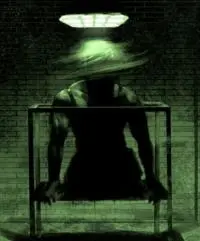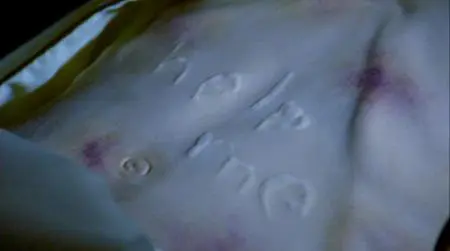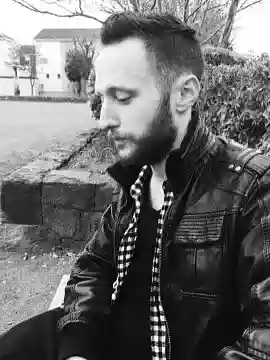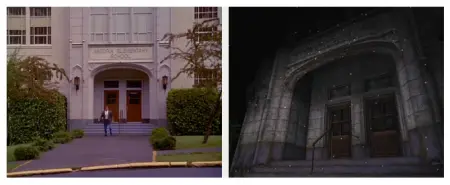This is the third column in our ‘Silent Hill on LitReactor’ series. If you missed the first two instalments then click through to read about The Real Town Behind Silent Hill and The Literary References in Silent Hill. Today is all about film and television references, of which there are many. This is not an exhaustive list but there are likely a lot of things you haven’t previously noticed or considered
'Jacob’s Ladder'
It should come as no shock to Silent Hill fans that Adrian Lyne’s psychological horror classic, Jacob’s Ladder, is top of the list. Akihiro Imamura—programmer for the original Silent Hill, producer for Silent Hill 2, and sub-producer for Silent Hill 4: The Room—lists it as one of his favourites. The influence of Jacob’s Ladder is not something the creators of Silent Hill have shied away from confirming, and even if they did, well, the references aren’t exactly subtle.
For starters, the way in which the monsters move—those twitching movements and violent jerks are lifted straight out of Jacob’s Ladder. Then there’s the way in which the action shifts from one reality or world to the next, making it difficult to discern what is and is not real. Indeed the entire aesthetic of Silent Hill has been influenced by Jacob’s Ladder. There are so many commonalities—from chainlink fences to spinning wheels to the subway to the hospital to the nurses to the demonic Valtiel in Silent Hill 3. If you check out the texture files for the original Silent Hill, there’s even the same anti-drug poster. You know, the one that starts with “Hell”.
 You’d think that would be more than enough references for one game, but believe me, we’ve got a while to go yet. There’s the key to Lyne House in Silent Hill 2 (as in Adrian Lyne, the director of Jacob’s Ladder), and don’t forget the protagonist is James Sutherland (same initials as Jacob Singer), and if you think that’s just a coincidence look at James’s jacket and Jacob’s jacket … more than just a passing resemblance. In Silent Hill’s hospital James is wheeled through a hall on a gurney. In Jacob’s Ladder Jacob is strapped to a gurney and wheeled through a hall. Not familiar with the scene? Oh, just Google something along the lines of “Jacob’s Ladder scene that inspired Silent Hill” and you’ll land upon it. Note, too, the number of wheelchairs and bicycle wheels in both. And that thing in the box in Jacob’s Ladder? There have been several nods throughout Silent Hill, from the corpses in Pyramid Head’s lair to the Mary final boss fight in Silent Hill 2 to the Ideal Father monster James encounters earlier on in the game. If we fast-forward to Silent Hill Homecoming, the game follows a soldier returning from war to his hometown, just as Jacob’s Ladder focuses on a Vietnam veteran.
You’d think that would be more than enough references for one game, but believe me, we’ve got a while to go yet. There’s the key to Lyne House in Silent Hill 2 (as in Adrian Lyne, the director of Jacob’s Ladder), and don’t forget the protagonist is James Sutherland (same initials as Jacob Singer), and if you think that’s just a coincidence look at James’s jacket and Jacob’s jacket … more than just a passing resemblance. In Silent Hill’s hospital James is wheeled through a hall on a gurney. In Jacob’s Ladder Jacob is strapped to a gurney and wheeled through a hall. Not familiar with the scene? Oh, just Google something along the lines of “Jacob’s Ladder scene that inspired Silent Hill” and you’ll land upon it. Note, too, the number of wheelchairs and bicycle wheels in both. And that thing in the box in Jacob’s Ladder? There have been several nods throughout Silent Hill, from the corpses in Pyramid Head’s lair to the Mary final boss fight in Silent Hill 2 to the Ideal Father monster James encounters earlier on in the game. If we fast-forward to Silent Hill Homecoming, the game follows a soldier returning from war to his hometown, just as Jacob’s Ladder focuses on a Vietnam veteran.
But I’ve saved my favourite reference for last, and we’re about to get into spoiler territory, so if you don’t want the ending of Jacob’s Ladder spoiled then skip to the next section. If you get the bad ending in Silent Hill, it turns out everything was in Harry’s head as he lay dying after crashing his Jeep. And in Jacob’s Ladder, it turns out it was all in Jacob’s head as he lay dying in a triage tent in Vietnam.
Oh, and as a final note, Jacob’s Ladder was inspired by the film An Occurrence at Owl Creek Bridge based on the short story by Ambrose Bierce. So there’s an indirect literary reference that wasn’t covered in the literary references instalment.
Dario Argento
Fans of Argento are in luck, because there are references to the world’s most famous giallo director galore. In the Silent Hill town centre you’ll find Kazanian Jewelry, a reference to Kazanian Antiques in Inferno. Then there’s the Metropol Theater in Old Silent Hill, a reference to the Metropol Theater in the Lamberto Bava-directed Dario Argento-produced Demons. But in case the theater name is a little too obscure for gamers, Silent Hill doubled down with Demons posters plastered down the side of the theater. Silent Hill: Downpour producer Devin Shatsky listed Suspiria as an influence in a 2011 interview and Silent Hill composer Akira Yamaoka lists it as his favourite film, comparing his own style to that of Goblin (who, of course, composed the original Suspiria soundtrack).
Then there’s the naming. Dahlia Gillespie was originally Daria after Daria Nicolodi, Argento’s ex-wife. The change to Dahlia was a nod to James Ellroy’s The Black Dahlia. Similarly, Alessa was originally Asia after Argento’s daughter.
'Kindergarten Cop'
So now we’re getting into weird territory, but Arnie’s early nineties action-comedy Kindergarten Cop is referenced multiple times in Silent Hill. In the literary references instalment I mentioned that the Midwich Elementary School was identical to the school in Kindergarten Cop, but it doesn’t end there. See there are posters that are identical to those displayed in the movie, such as the white dog poster, then there’s the similarities in terms of the reception area, the first aid locker, and even the number seven school bus in Silent Hill. No prizes for guessing the number of the Kindergarten Cop bus. I guess when Team Silent aren’t watching horror films they’re kicking back with nineties Arnie classics. Perhaps next instalment we’ll get some nods to Jingle All The Way, Terminator 2, and Total Recall.
David Lynch
Silent Hill fans looking for a television series that has some of that small-town eeriness and atmosphere that Silent Hill is famous for are rarely disappointed with Twin Peaks. Silent Hill producer, Akihiro Imamura, notes David Lynch as a huge influence, particularly on the second Silent Hill instalment, and lists Twin Peaks as a personal favourite. Eraserhead, Lost Highway, and Dune are also listed as influences. But it is Blue Velvet that is far and away the most overtly referenced Lynch film in the second game. There’s the shooting from the closet—down to the type of closet and camera angle—and the part where the protagonist catches Pyramid Head molesting—or arguably fighting—two mannequins, referencing the scene in which antagonist Frank beats and rapes Dorothy whilst Jeffrey watches from the closet. Then there are the similarities between Maria—who dyes her hair, develops a romantic interest in James, radically changes personality within the game, and works as a performer at a bar—and Dorothy—who wears a wig, develops a romantic interest in Jeffrey, radically changes personality within the film, and works as a performer at a bar. Note, too, the similarities in stage layout and curtains in the Heaven’s Night and Blue Velvet bars. Even when it comes to defence methods, both Maria and Dorothy opt to wield a big-ass kitchen knife. And then there’s the apartments themselves, perhaps more of a stretch, but there’s a similarity between Blue Creek Apartments in Silent Hill 2 and Deep River Apartments in Blue Velvet.
'Solaris' and 'Fantasma d’amore'
In Andrei Tarkovsky’s Solaris, the protagonist experiences hallucinations based on his deepest thoughts and must confront memories of his deceased wife. There’s no official confirmation that Solaris influenced Silent Hill, but it bears an uncanny resemblance to James Sutherland’s plight in Silent Hill 2. Similarly, in Dino Risi’s Fantasma d’amore (Ghost of Love), protagonist Nino has a chance encounter with a former lover and ghost of the past, Anna, and he winds up chasing ‘ghosts’ through foggy streets for much of the film. If that’s not Silent Hill enough for you, then towards the end of the film Anna’s hair is similar to that of James’s wife Mary. It may be a stretch, but knowing the lengths the creators of Silent Hill have gone to for the sake of throwing a reference in, well, maybe it isn’t …
'The Exorcist'
On a door in the original Silent Hill, ‘help me’ is scrawled in much the same style as those same words were scarred across Regans’ stomach. There are also a couple of nods to The Exorcist 3. Note how Lisa Garland wears the same nurse’s uniform as the nurse. And in the hospital you may note ‘what a wonderful world' on the wall just before Heather passes by Valtiel. Those who know The Exorcist 3 will remember “It’s A Wonderful Life” scrawled on the wall in a victim’s blood (what else you gonna write with?).

Other References
- The abandoned wheelchair in Silent Hill 3 nods to Session 9.
- The Walking Dead, The Shawshank Redemption, The Fugitive, and 'Rubber Johnny' were all cited as inspirations for Silent Hill: Downpour. You may be wondering “what the heck is Rubber Johnny?” Don’t wonder that. Seriously, once you find the answer you may wish you hadn’t asked the question. It’s a music video by Chris Cunningham and Aphex Twin—it’s certainly not safe for work and it should probably come with a trigger warning, but given how abstract it is, I’m not sure what that trigger warning would say …
- Outside the cinema there are posters for Crusher Dan (Die Hard 2) and Shoot (Raiders of the Lost Ark).
- If you unlock the special alien ending the credits are a homage to Star Wars.
- Mushnick’s Florist riffs on Mushnik’s Florist in Little Shop of Horrors.
- Café 5 to 2 is 5 to 2 Café from Natural Born Killers.
- Cut-Rite Chain Saws is taken from The Texas Chainsaw Massacre 2.
- There’s a landing that mirrors the Bates Motel in Psycho landing (also shout out to Bloch Street and Norman’s Hotel).
- The picture of Alessa bears more than a passing resemblance to Florence Tanner in The Legend of Hell House.
- Dr. Michael Kaufmann, the director of Alchemilla Hospital in Central Silent Hill, is named after Troma Entertainment founders Lloyd Kafuman and Michael Herz.
- Lisa Garland’s surname is a nod to Judy Garland in The Wizard of Oz.
- ‘Gangsta’s Paradise’ by Coolio from the Dangerous Minds soundtrack is referenced on a bench in Silent Hill. They went for the classic “Gangsters Paradise” which is always a good approach to avoid legal issues—soon I’ll be putting this to the test with a number of releases by my pseudonyms Steven King and Richard Backman.
- At the Central Square Shopping Center in Silent Hill 3 you’ll battle the Split Worm. Note how it tunnels underground and re-emerges like the Graboid in Tremors. It also appears at the gallows of Toluca Prison in Silent Hill: The Arcade (though where you’ll find such an arcade machine these days, I’m not sure … but hey, if you know of one leave a comment).
- In Midwich Elementary School a poster for ‘A Woman Came Down From Planet Vulcan’ is a Star Trek reference.
- The bloody hooks and chains in the Otherworld are a nod to Hellraiser.
- When you first encounter Dahlia Gillespie she turns around just as Chris MacNeil does in The Exorcist (note, too, the headscarves).
- A martial arts studio is called Bruce Lee, though you’ll have to understand Chinese Characters to notice that one.
- David Cronenberg, Alfred Hitchcock, David Fincher, and artists Francis Bacon, Andrew Wyeth, and Rembrandt are all listed as influential by CG and character artist Takayoshi Sato.
- The opening of Silent Hill when Harry Mason is driving through the fog nods to Humbert Humber (played by James Mason) in Kubrick’s Lolita.
- Alejandro Jodorowsky is referenced in the chapel paintings in Silent Hill 3, which are akin to the church paintings in Santa Sangre. Then there’s the thematic similarities between Santa Sangre’s protagonist’s mother and the primary antagonist in Silent Hill 3, Claudia Wolf. There’s also a nod to The Holy Mountain at the end of Silent Hill 4: The Room in the area with the bodies.
- Twelve Monkeys is referenced with an FAA sign on Simmons Street in Central Silent Hill.
- Jan Švankmajer’s 1988 dark fantasy film Alice is referenced when Heather descends an elevator to the Otherworld just as Alice descends an elevator to another world. The scene in which Heather uses a screwdriver to open a drawer in the Hilltop Center resembles Alice opening the drawer in Alice. And the lightbulbs in a can from Silent Hill 2 are another reference to Alice.
- Jean-Jacques Beineix’s 1986 erotic psychological drama Betty Blue is a possible influence for the Silent Hill 2 scene in which James smothers Mary with a pillow.
- The Death Machine final battle in Silent Hill 4: The Room is likely influenced by Event Horizon, where members of a rescue team suffer hallucinations based on emotional wounds from their past.
- In Tarsem Singh’s directorial debut The Cell, protagonist Catherine Deane enters the dreamscape of serial killer Carl Rudolph Stargher’s mind. As you can imagine, the mind of a depraved serial killer isn’t exactly a feelgood place, so it’s a perfect fit for the nightmare that is Silent Hill and bears a strong resemblance to how Silent Hill 4 protagonist, Henry Townshend, travels through Walter Sullivan’s Otherworlds.
- And, finally, there are a number of Stephen King film references like the poster for the 1976 adaptation of Carrie, ‘redrum’ scrawled across a garage door, and the mist that permeates all of Silent Hill is surely a nod towards The Mist.
What have I missed? Which are your favourite film and television references in Silent Hill? Which films and television shows remind you of Silent Hill? Is there another Silent Hill article you want to read on LitReactor or have we reached peak Silent Hill? See you in the comments!

About the author
Michael David Wilson is the founder of the popular UK horror website, podcast, and publisher, This Is Horror. Michael is the author of the novella, The Girl in the Video, and the novel, They’re Watching, co-written with Bob Pastorella. His second novella, House of Bad Memories, lands in 2021 via Grindhouse Press. His work has appeared in various publications including The NoSleep Podcast, Dim Shores, Dark Moon Digest, LitReactor, Hawk & Cleaver’s The Other Stories, and Scream. You can connect with Michael on Twitter @WilsonTheWriter. For more information visit www.michaeldavidwilson.








